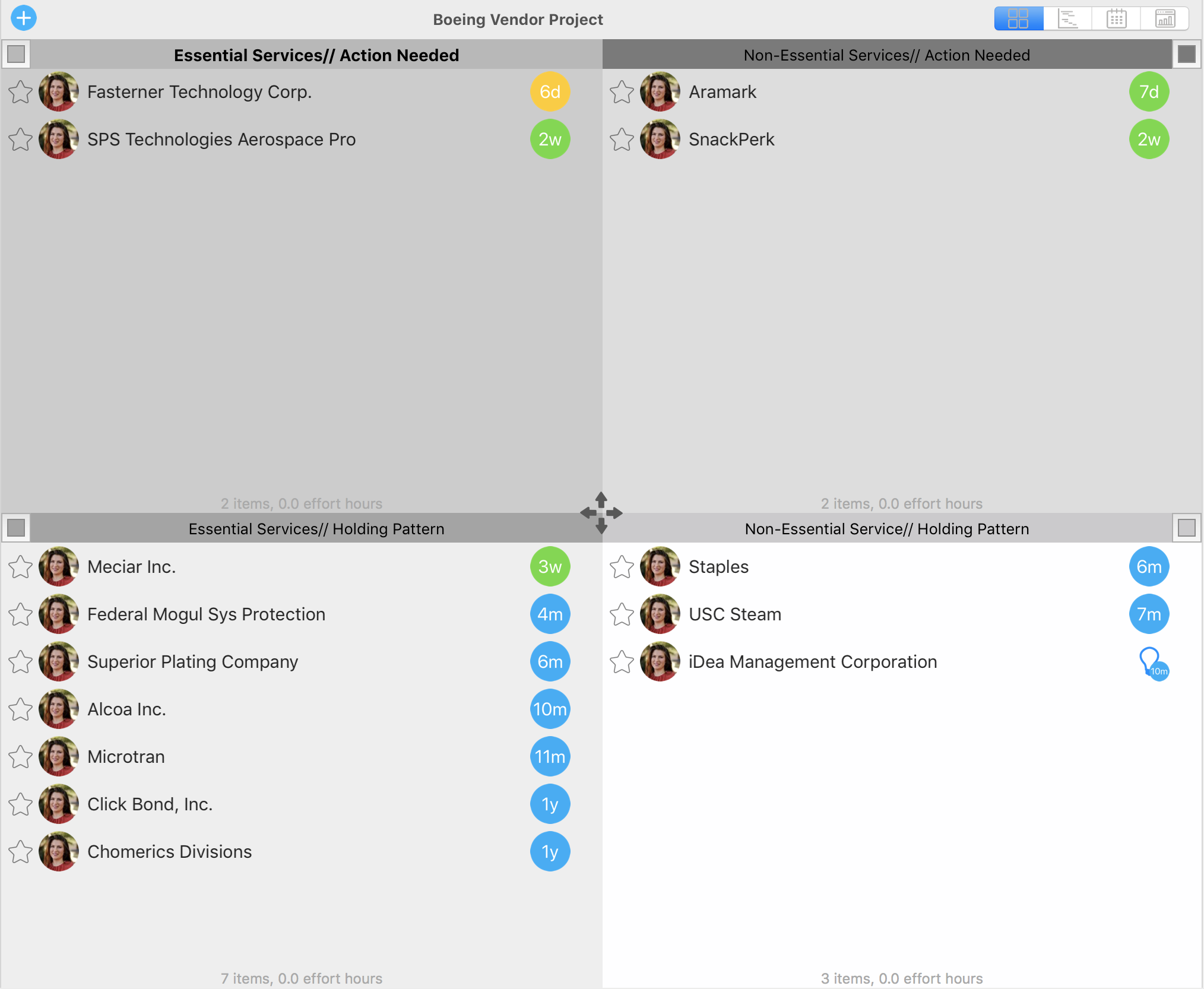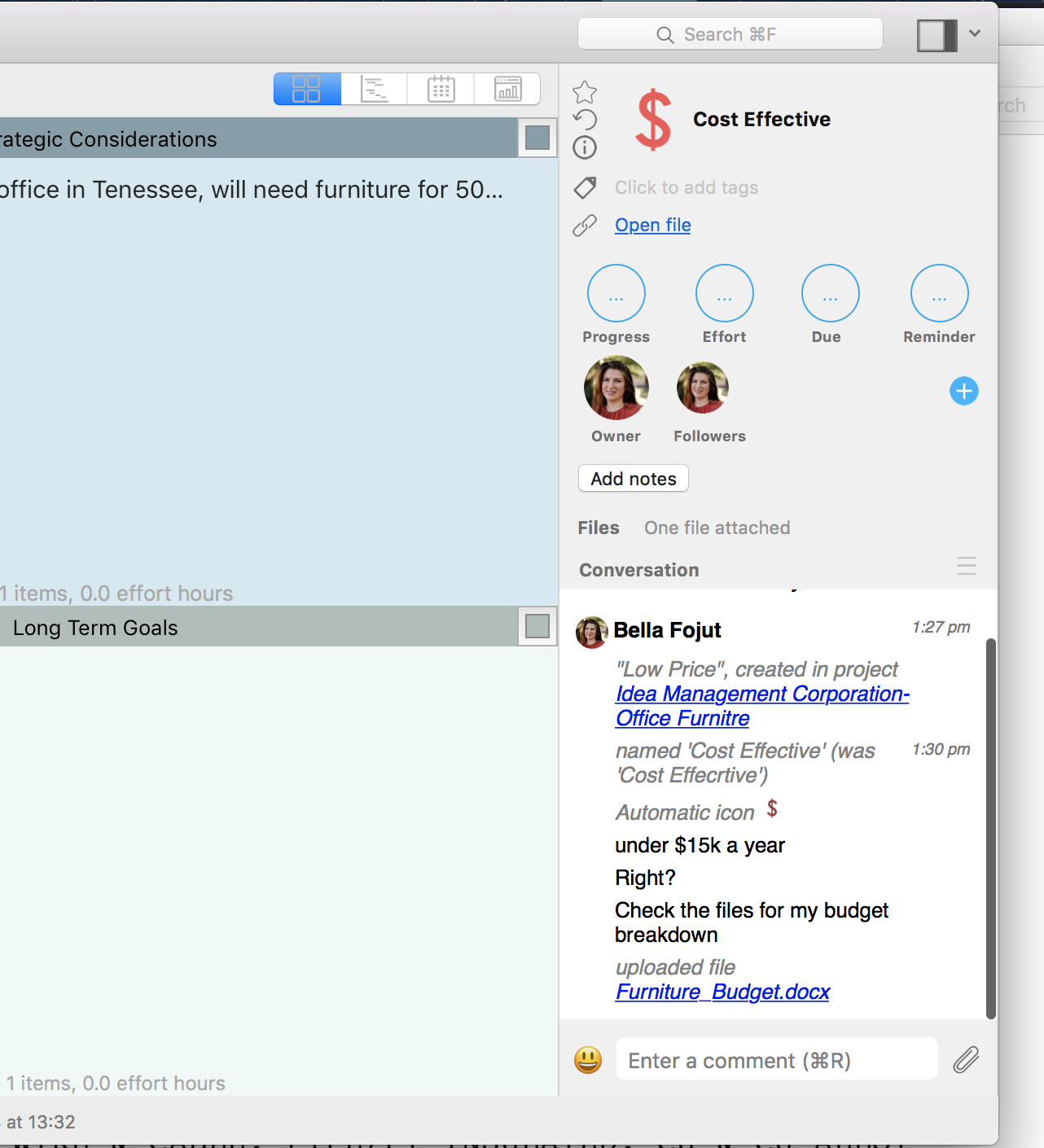What is Vendor Management?
According to Gartner, vendor management is “a discipline that enables organizations to control costs, drive service excellence and mitigate risks to gain increased value from their vendors throughout the deal life cycle.”
In the past, the outcome of an effective vendor management process was, first and foremost, was locating the lowest cost for each service. However, vendor management is, more importantly, about making sure that the vendor chosen will contribute best to success.
Whether the vendor in question provides an essential or non-essential service, a sound vendor relationship is key to a successful organization.
High Level Vendor Management
Launch the vendor management template, here.
In addition to helping companies and teams prioritize and collaborate, the program and also help with vendor management. The Vendor Management Template, helps the vendor management team keep track of all vendors in one view:
The Vendor Management Template categorizes vendors based on two criteria. The first is whether or not the vendor supplies an essential or non-essential service. An essential service is a process or material that is part of the company core strategic plan. A non-essential service will be a secondary process or supply that supports strategic activities in a secondary way. The second consideration in the template is whether or not the vendor relationship requires action. The vendor relationship needs attention on a regular basis. While one vendor may need attention at the moment, vendors may have recently been taken care of.
In the Vendor management template, the vendor management team can move suppliers back and forth based on what relationships are due for contract renewal or goal setting conversation. Once a vendor has been addressed, the management team can set a due date and move the vendor item into one of the “holding pattern” quadrants.
Precise Vendor Management
While the template above helps team keep track of the high level vendor management process, the Individual Vendor Template helps teams strategize and collaborate with there vendors one one one:
Launch the individual vendor template, here.
By means of this project the vendor management team can share priorities and communicate around these priorities. In addition, considerations that feature in the strategic conversation between the team and the vendor can be listed. The last two quadrants hold long term and short terms goals, both very important in vendor management.
In the items details collaborators can hold conversation and files, links or any relevant information:
Nesting for Better Vendor Management
Individual vendor projects can be nested within larger the vendor management database, letting teams access specific information conveniently. Learn how to nest projects.


